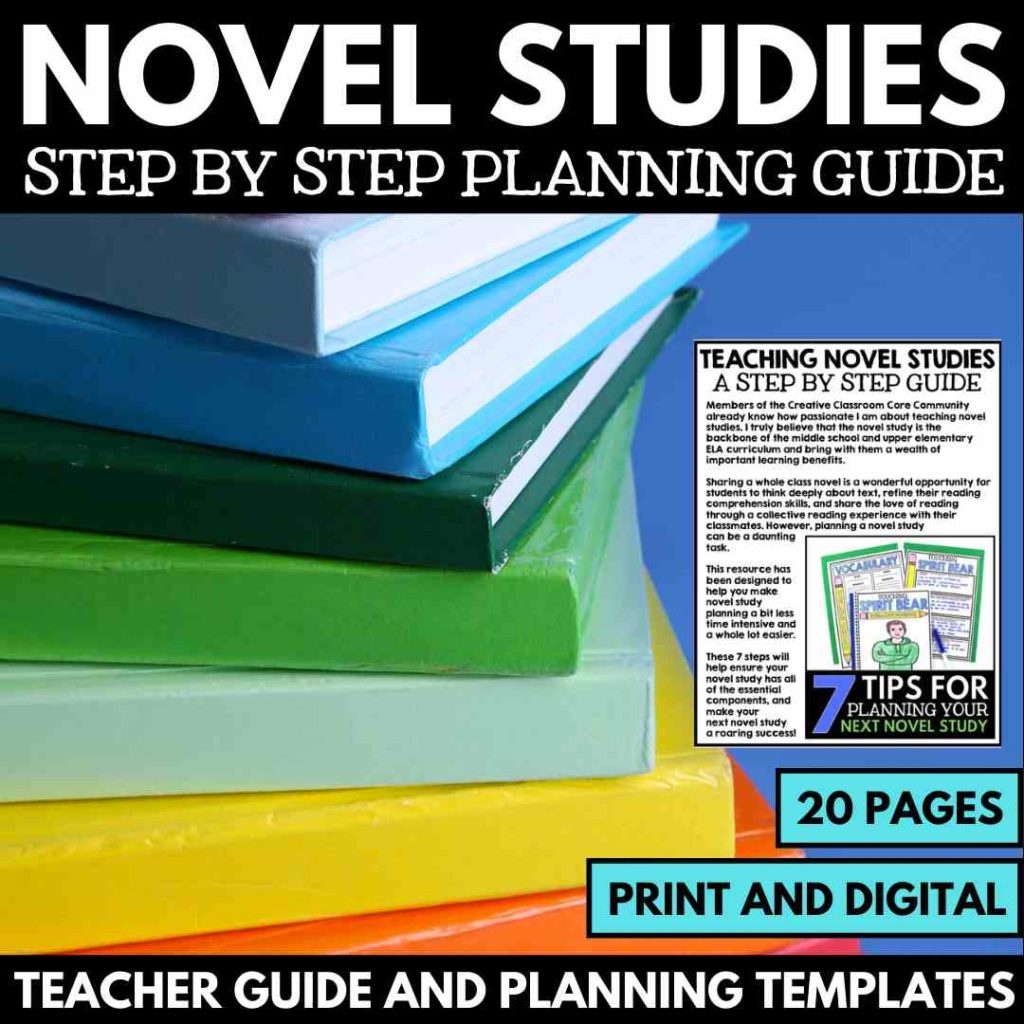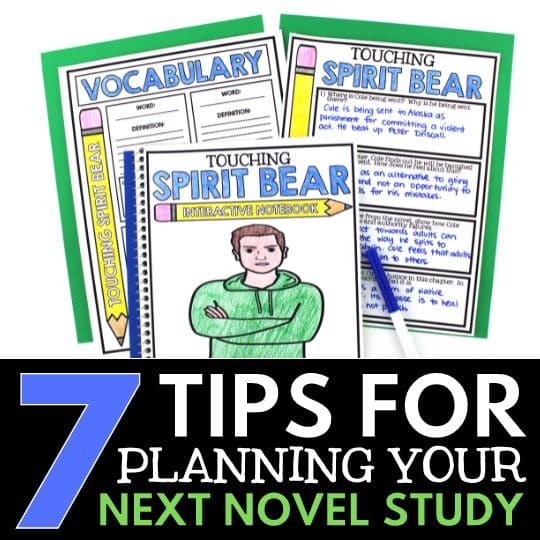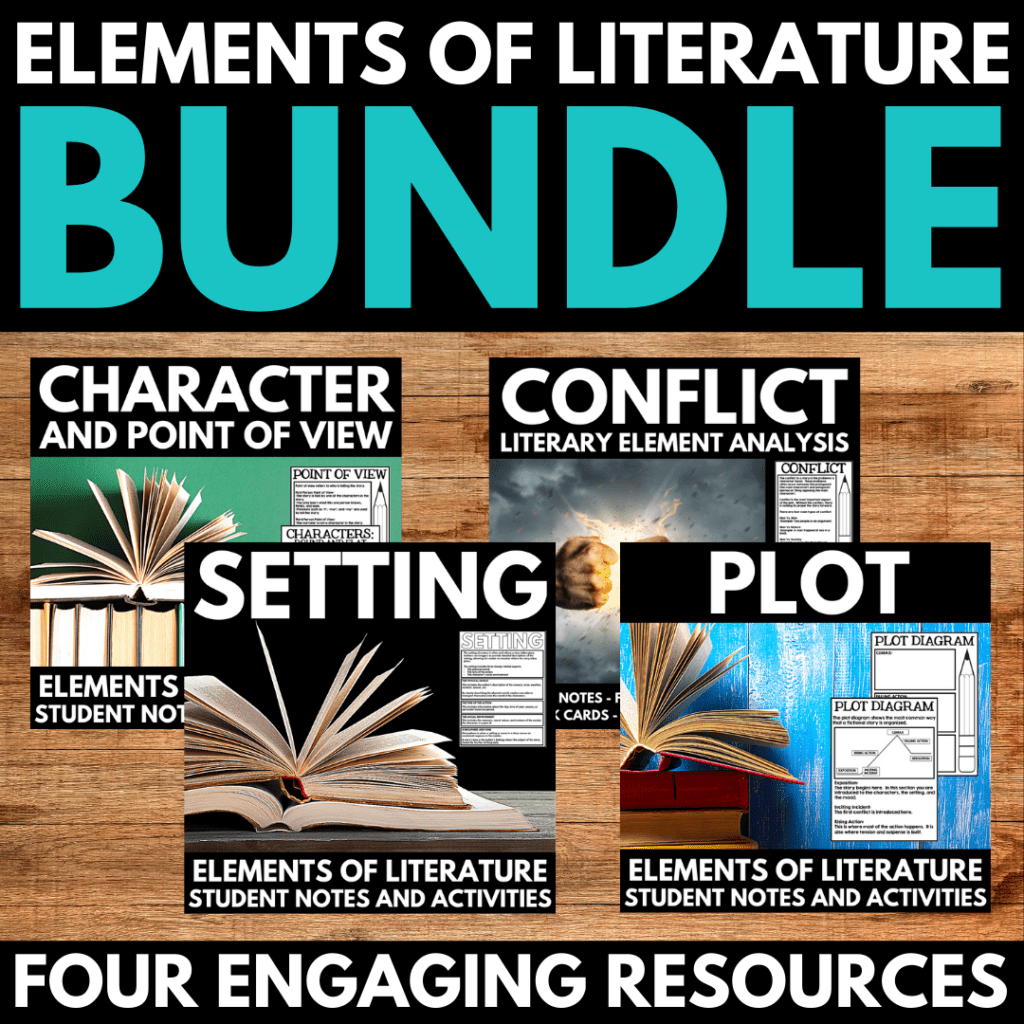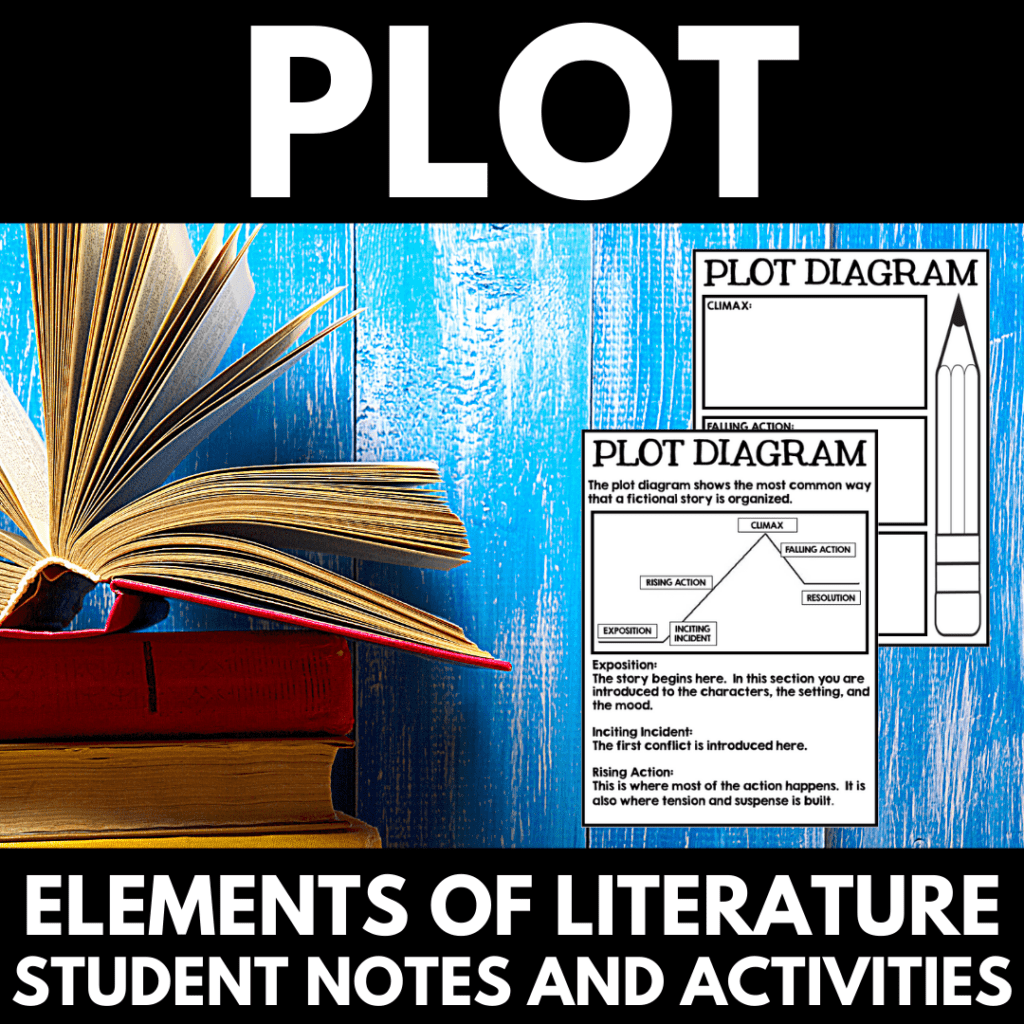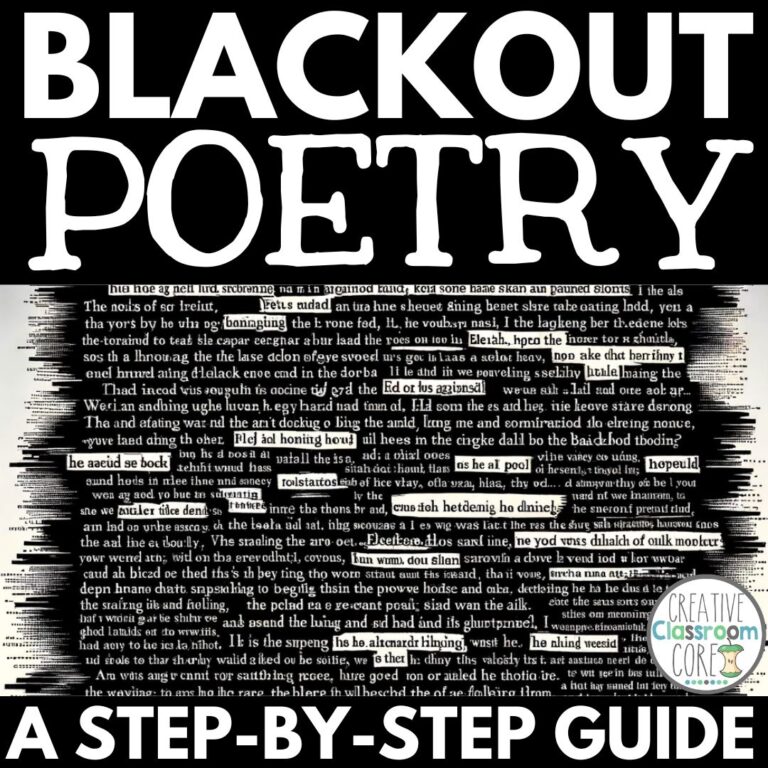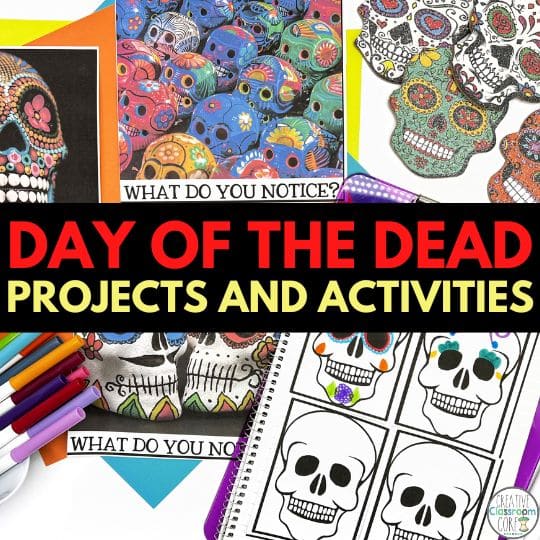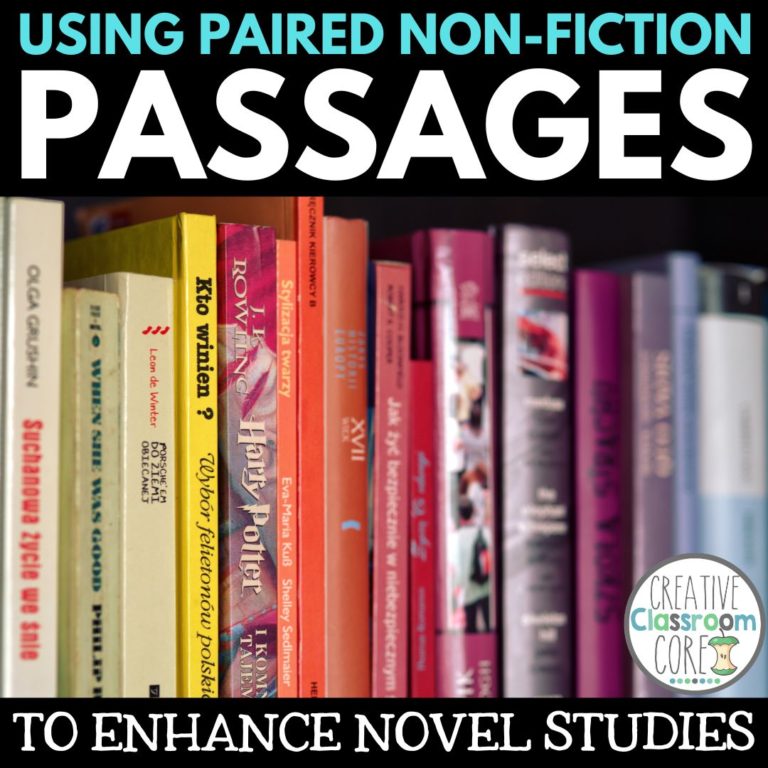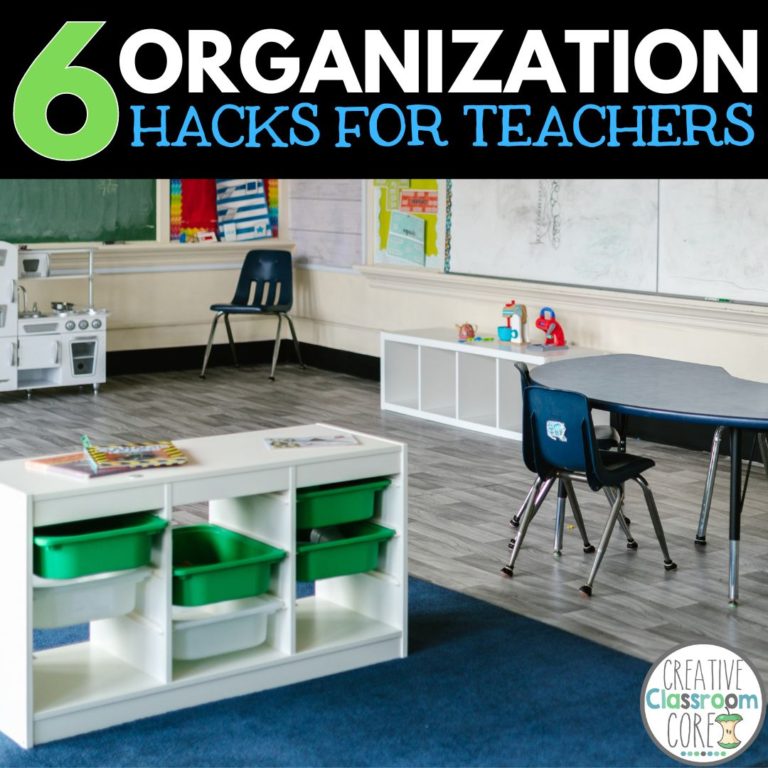Planning a novel study – A Step By Step Guide
By MARISSA DESPINS Updated Nov 28, 2023
Members of the Creative Classroom Core Community already know how passionate I am about teaching novel studies. I truly believe that the novel study is the backbone of the middle school and upper elementary ELA curriculum, and bring with them a wealth of important learning benefits. Sharing a whole class novel is a wonderful opportunity for students to think deeply about text, refine their reading comprehension skills, and share the love of reading through a collective reading experience with their classmates. However, planning a novel study can be a daunting task.
If you’re just starting out or need a refresher on the basics of planning a novel study, our article What is a Novel Study? provides a great foundation before diving into the specifics of planning.
Looking for a complete guide to planning your next novel study? Grab our free guide below!
Today I am here to help make planning a novel study a bit less time intensive and a whole lot easier. These 7 steps will help make your next novel study a roaring success!
1- Text Selection
Perhaps the most important part of planning a novel study involves text selection. Choosing the right book for your learners can make all the difference. With an ever evolving list of new titles and authors to explore, as well as the traditional classics, it can be quite overwhelming to pick the right book.
When choosing books for my learners, I like to keep the following questions in mind:
-Is the book at an appropriate level for my students to read independently, or will I be reading the novel aloud?
-What is the content of the book? Is it appropriate for the age I teach and our school population?
-Does the novel provide windows and mirrors for my students (see this post for more information)?
-Am I able to integrate other subject areas into the novel study?
-Am I able to connect the novel to other activities we are planning to complete throughout the year?
-Are the characters presented in ways that are culturally appropriate?
-Am I exposing my learners to a wide range of authors, genres, and writing styles throughout the year?
-What is the length of the book? Am I able to dedicate enough time to give the novel the attention it deserves?
-Do I have access to a class set of the novel, or am I able to get by with one teacher copy to read aloud?
Asking these questions before choosing your next novel study will help you narrow down your choices. You can check out some of my favorite novel studies for Upper Elementary here, and some Middle School favorites here.
If you are looking for a list of great middle school novels you can print out and choose from, you can grab this list for FREE by clicking here or on the image below.
2- Introduction Activity
After you have carefully chosen your novel, it is time to start planning a way to introduce it to you learners. This helps to build anticipation and get kids excited about the book.
For a comprehensive approach to this phase, consider utilizing our Novel Study Planning Framework, which offers structured activities and ideas for introduction.
3 – Comprehension Questions
Comprehension questions are an important part of any novel study. They allow students to show that they understand what they are reading and provide excellent classroom discussion opportunities. That being said, giving students mountains of questions can really kill reading enjoyment. In my experience, providing students with 3-5 questions per chapter allows students to demonstrate their understanding without making the process overly daunting. Asking students to provide text evidence to support their answers is an important skill that they carry with them into other subject areas.
Enhance your comprehension approach with our guide on Building Reading Comprehension Strategies, offering techniques that can be applied across various texts.
4- Word work
Novels are great ways to introduce students to new vocabulary. Providing opportunities for students to learn and use there new words is an important piece of any novel study. Seeing the words in context helps students to infer meaning, and working with the words really helps them to “stick”.
To see this in action with a specific novel, check out our 3 Favorite Activities for an Outsiders Novel Study, which includes engaging vocabulary activities.
5- Character Analysis
In order to fully comprehend a novel, students need practice with character analysis. Understanding what motivates a character and makes them who they are is an important part of the reading process. Through in depth analysis, students learn to connect with characters, see how they develop and change over time, and recognize how they impact a story’s plot.
6- Elements of Literature
A novel study is a great opportunity to review the elements of literature. When planning your novel study, be sure to incorporate activities focused on key elements like plot, setting, point of view, and conflict.
Looking for some activities to review the elements of literature and incorporate into your next novel study? You can grab my complete Elements of Literature Bundle by clicking here or on the image below.
7- Writing about Reading
Quiet time for reflecting and writing is a key component of a successful novel study. Through writing about reading, students are able to share their personal connections, understandings, and insights. While class discussions can be powerful, students sometimes feel more comfortable sharing their thoughts and feelings independently and in written form.
Some activities to encourage student writing and reflection include:
-Journal Prompts
-Open ended questions
-Essay activities
-Student generated reflections
Looking for some free resources for help when planning a novel study?
Check out these FREE novel study resources by clicking on the links below!
Looking for more information on planning a novel Study?
Check out the posts below for tips, tricks, and resources for planning your next novel study!
Upper Elementary Novel Study Favorites
Middle School Novel Study Favorites
Benefits of Teaching Novel Studies
3 Ways to Cultivate a Love of Reading
Interested in signing up for my email list?
If you are interested in signing up for my email list, you can do so by clicking on the link below. I periodically send out emails with free resources, teaching tips, and exclusive deals. Signing up will also give you immediate access to some of my best selling Interactive Notebook resources – foldables, graphic organizers, and other fun activities.
